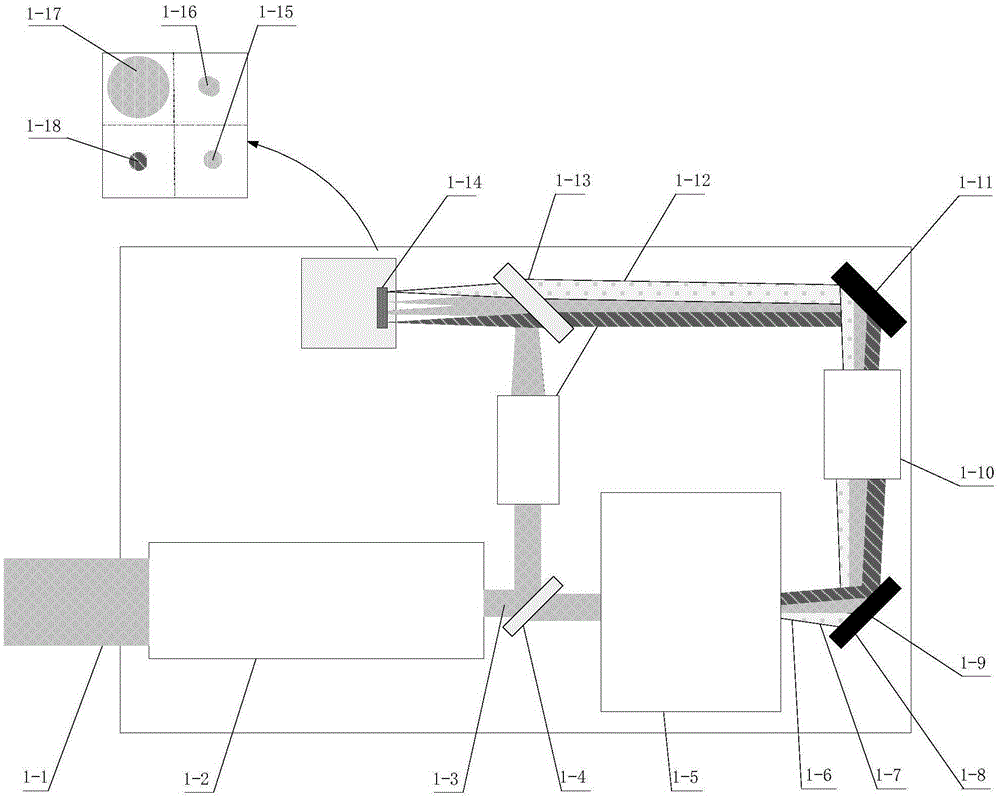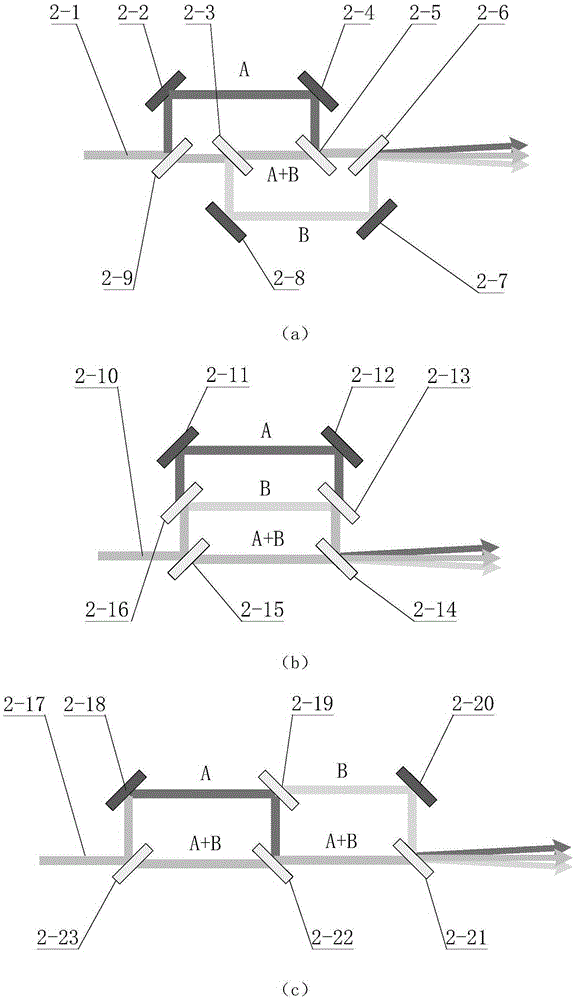Double-light-beam synthesis sensor by utilizing single detector to perform optical pupil and optical axis regional imaging
A technology for synthesizing sensors and detectors, which is applied in the field of optical engineering, can solve problems such as reducing the use of detectors, achieve the effects of improving measurement consistency and stability, reducing system or equipment costs, and simplifying measurement structures
- Summary
- Abstract
- Description
- Claims
- Application Information
AI Technical Summary
Problems solved by technology
Method used
Image
Examples
Embodiment Construction
[0031] The present invention will be further described below in conjunction with the accompanying drawings and specific embodiments.
[0032] The principle of the present invention is as Figure 1 ~ Figure 3 shown. figure 1 is a schematic diagram of the optical path of the present invention, figure 2 is the internal typical structure of the optical axis separation module (1-5) of the present invention, image 3 is the schematic diagram of the focusing module (1-10).
[0033] Such as figure 1 As shown, the present invention consists of a common optical path shrinking module 1-2, a beam splitter 1-4, an optical axis separation module 1-5, an imaging module 1-12, a focusing module 1-10, a first coupling mirror 1-9, The second coupling mirror 1-11, the third coupling mirror 1-13 and the detector 1-14 are composed of several parts.
[0034] The functions performed by each part are: (1) The common optical path narrowing module 1-1 performs the function of narrowing the coinc...
PUM
 Login to View More
Login to View More Abstract
Description
Claims
Application Information
 Login to View More
Login to View More - R&D
- Intellectual Property
- Life Sciences
- Materials
- Tech Scout
- Unparalleled Data Quality
- Higher Quality Content
- 60% Fewer Hallucinations
Browse by: Latest US Patents, China's latest patents, Technical Efficacy Thesaurus, Application Domain, Technology Topic, Popular Technical Reports.
© 2025 PatSnap. All rights reserved.Legal|Privacy policy|Modern Slavery Act Transparency Statement|Sitemap|About US| Contact US: help@patsnap.com



